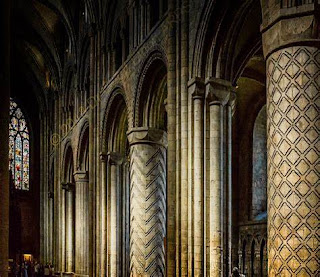Key reading - Factors affecting the property value of a church
Besides news, this blog provides useful background. Here Save The Parish Cornwall's Peter Bellenes has gathered together key information for groups of people who are fighting the sale of church buildings. These are factors that the residents of Merrymeet might to take into consideration: they are fighting the proposed sale of their mission church, St Mary's.
At the end are some useful links with further information.
Advantages – price positive
Ø - Location is all-important. If the church is situated
where you would not be able to put a new build - as is St Mary's - this will affect the price
Ø - The space inside is large and can be
converted into open space living whilst making the most of the original design
Ø - There is level pedestrian access to the main
areas
Ø - The shortage of suitable properties means prices are high.
D Disadvantages – price negative
Ø - Need for new vehicle access
Ø - Need for mains drainage or septic
tank
Ø - Possibility of need for enhanced
mains electric supply
Ø - The stained glass windows will create
draughts so heating bills could be very high
Ø - There could be damp, loose slates or
damaged roof timbers and gaps in the window frames, and potential of dry or wet rot
Ø - Problems with insulation in terms of noise and cold
Ø - Burial grounds – public access if
left v problems of removal permissions for human remains and monuments.
Ø - It is unlikely a buyer will be able to make any
extensive changes to the exterior of the building
Ø - There will be a delay while the Church Commissioners consult
the public through a draft scheme allowing members of the public to make
comments for or against. There is a likelihood of strong opposition to the only public
building in a community being close.
Ø - Requirement of planning permission
for change of use
Ø - Architect detailed plans required for
structural alterations
Ø - Consideration of plans by Church
Commissioners requiring Plans and Drawings of a quality required for listed building
consent to give a full understanding of the impact on the building.
•
new
access and parking arrangements
•
new
mains services – including confirmation utility companies have agreed the
siting and that service pipes will be laid at the minimum depth that is
permitted.
Ø -An initial archaeological report may be required.
Ø -Application for Listed Building
Consent for Alterations, Extension or Demolition of a Listed Building (Planning
(Listed Building and Conservation Areas) Act 1990.
Ø
What
is the grade of listing: Listed buildings are classified into grades as
follows:
• Grade I -
buildings of exceptional interest
• Grade II*
- particularly important and more than special interest
• Grade II -
buildings of special interest, warranting every effort being made to preserve
them (this is the most common)
Ø It is not possible to make an application
for “outline” listed building consent so full plan needed at the outset.
Ø References:
Ø Ref:
Listed
Buildings - Other permissions you may require - Planning Portal
Ø Ref:
Listed
building consent - Consent types - Planning Portal
Ø Ref:
Listed
Building Consent | Historic England
Ø Ref:
Guidance
from the Church of England for purchasers and lessees
Ø Ref:
Church
Buildings For Sale - Derelict and Unused Churches
(derelictpropertyforsale.co.uk)

.png)